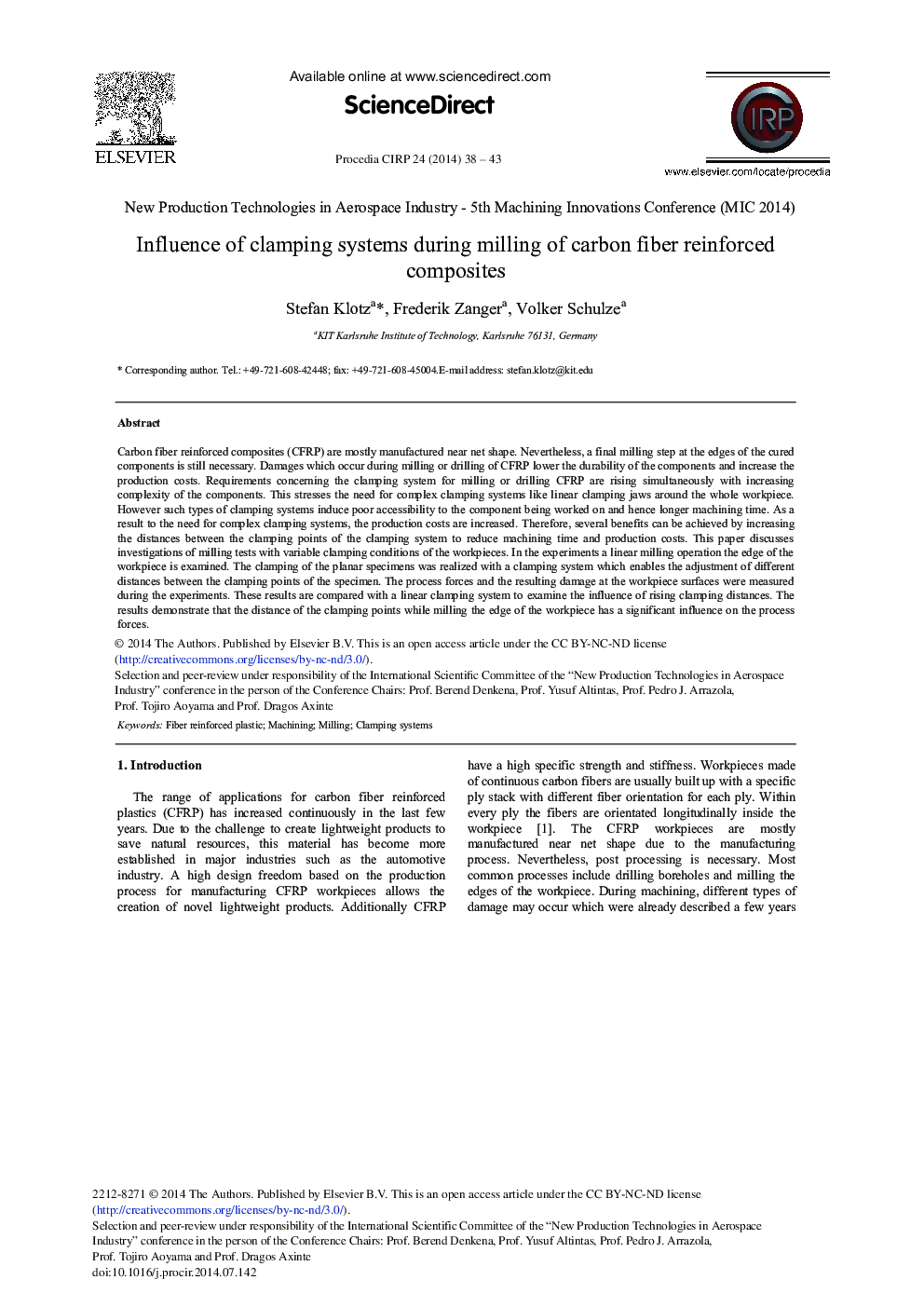| Article ID | Journal | Published Year | Pages | File Type |
|---|---|---|---|---|
| 1700283 | Procedia CIRP | 2014 | 6 Pages |
Carbon fiber reinforced composites (CFRP) are mostly manufactured near net shape. Nevertheless, a final milling step at the edges of the cured components is still necessary. Damages which occur during milling or drilling of CFRP lower the durability of the components and increase the production costs. Requirements concerning the clamping system for milling or drilling CFRP are rising simultaneously with increasing complexity of the components. This stresses the need for complex clamping systems like linear clamping jaws around the whole workpiece. However such types of clamping systems induce poor accessibility to the component being worked on and hence longer machining time. As a result to the need for complex clamping systems, the production costs are increased. Therefore, several benefits can be achieved by increasing the distances between the clamping points of the clamping system to reduce machining time and production costs. This paper discusses investigations of milling tests with variable clamping conditions of the workpieces. In the experiments a linear milling operation the edge of the workpiece is examined. The clamping of the planar specimens was realized with a clamping system which enables the adjustment of different distances between the clamping points of the specimen. The process forces and the resulting damage at the workpiece surfaces were measured during the experiments. These results are compared with a linear clamping system to examine the influence of rising clamping distances. The results demonstrate that the distance of the clamping points while milling the edge of the workpiece has a significant influence on the process forces.
